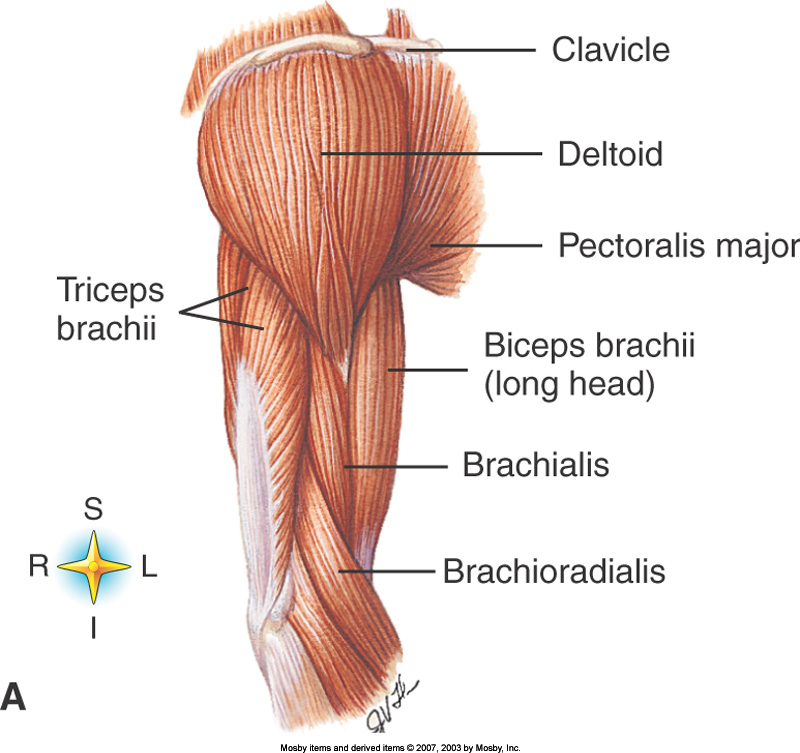How do antagonistic pairs of skeletal muscles affect bones?
1 Answer
Interactions of Skeletal (using bones) Muscles are mostly in pairs but can have others working along with them.
We have here the muscles that move (flex) the arm at the elbow.
They are called:
Prime Mover (agonist) = the primary muscle responsible for a movement.
The biceps brachii flexing the arm at the elbow,
Antagonist(s ) = the muscle(s) in opposition to the action of the prime mover. The antagonist relaxes (or stretches) during the prime movement.
The triceps brachii is the antagonist of the biceps brachii when we flex the arm at the elbow.
Synergist(s) = muscles that assist the prime mover.
The brachialis helps the biceps brachii during elbow flexion.
Fixators = muscle groups that stabilize the origin of the prime mover (i.e. hold it in place) so that the prime mover can act more efficiently.
The scapula is the origin for many arm muscles, but it must be held in place by fixator muscles in order to function in this way.
a. serratus anterior
b. pectoralis minor
All of these are involved in flexing the arm at the elbow. Many muscle groups are not as complex.



